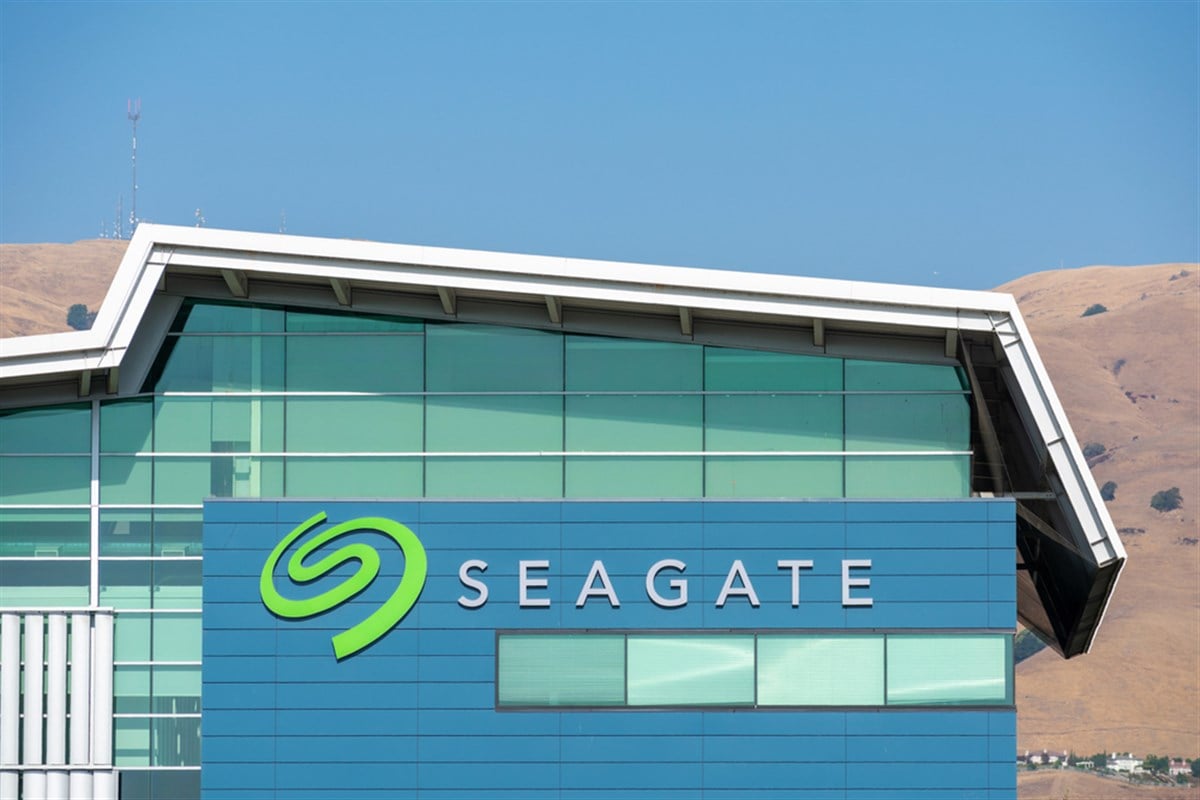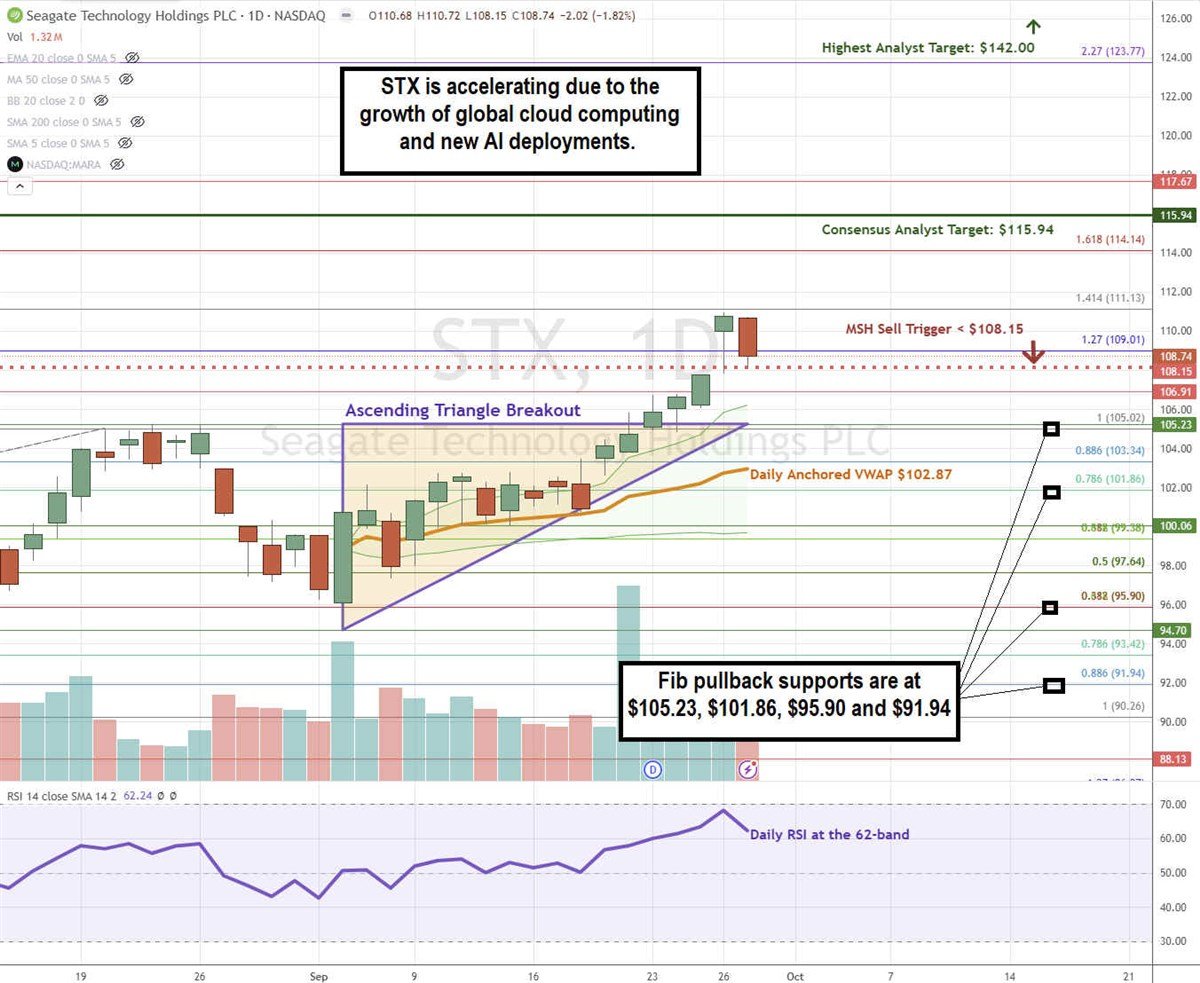
Seagate Technology Holdings plc (NASDAQ: STX) is a leading provider of consumer and enterprise data storage solutions. It is the largest hard disk drive (HDD) manufacturer in the world and also sells solid-state drives (SSD). Combined with rival Western Digital Co. (NASDAQ: WDC), the duopoly commands 80% of the global market share of HDD production.
The robust fiscal fourth-quarter 2024 results for memory chip maker Micron Technology Inc. (NASDAQ: MU) lifted the computer and technology sector, notably data storage products makers. The standout statistics were the 93% YoY revenue growth driven by the artificial intelligence (AI) and data center boom.
Data Storage Demand Will Only Grow
Data is everywhere and needs to be stored. That fact will never go away. Whether it's recording closed-circuit TV camera footage to storing files, videos or images, data is a secular trend. The advent of AI has upped the ante as it requires mountains and oceans of data for training and inferencing of AI models. That surging demand for data storage is a boon to Seagate. The AI and data center boom falls right into Seagate’s wheelhouse.
A zetabyte (ZB) is the equivalent of 1 trillion gigabytes (GB) and 1,000 petabytes (PB). An exabyte (EB) is 1,000 PBs. A PB is 1,000 terabytes (TB). A terabyte is 1,000 GB. One ZB can store 12.3 million 4K videos. In 2020, internet users generated 64.2 ZB of data. Annual data creation is expected to reach 147 ZB by the end of 2024.
With around 5.35 billion worldwide internet users, each user creates 15.87 terabytes of data daily. Alphabet Inc.'s Google manages nearly 20 PBs daily. YouTube uses 440,000 TBs daily. As data generation grows, Seagate will continue to accommodate the growth with its storage products.
Seagate Continues to Develop Game-Changing Technology
For its part, Seagate has been on the cutting edge of HDD technology. Its heat-assisted magnetic recording (HAMR) technology has been a game changer, enabling significant increases in HDD capacity and making it even cheaper to store massive amounts of data. Its MACH.2 multi-actuator technology uses two independent actuators within a single HDD, thereby improving the read/write speed and performance by doubling the data transfer rate. This ups the speed aspect of HDDs, which are considered much slower than SSDs.
HDDs Still Benefits From the AI Boom
While SSD is the preferred storage for AI applications due to its speed and reliability with no moving parts, the economics can be a burden. HDDs provide the most bang for the buck, enabling the cheap storage of much more data. As it turns out, developers may prefer to use fast SSD for AI training, inferencing, and applications. Still, since not all data is used constantly, there is also a growing need to store the rest of the data that are not accessed immediately economically. This is where HDDs come to the rescue.
Seagate Experiences Sequential Growth Surge
Seagate reported fiscal Q4 2024 EPS of $1.05, beating consensus estimates by 29 cents. Revenues rose 18% YoY to $1.89 billion, beating $1.87 billion consensus estimates, driven by strengthening global cloud computing demand. Non-GAAP gross margin rose 480 bps sequentially to 30.9%. Non-GAAP operating income rose 79% sequentially to $327 million. Adjusted EBITDA improved 45% sequentially to $404 million. Seagate shipped 114 exabytes (EB) of capacity in the quarter, up 15% sequentially QoQ. Nearline cloud revenue has more than doubled YoY, which is driven by traditional cloud computing workloads and new AI deployments.
Seagate Issues Downside Guidance
On Sept. 4, 2024, Seagate revealed it expects fiscal Q1 2025 EPS at the high end of its EPS guidance of $1.05 to $1.40, but still shy of $1.43 consensus estimates. Seagate CFO Gianluca Romano commented, “We guided the quarter sequentially no way higher from $1.05 to $1.40 as a midpoint. I think we can be in the high part of the range, so better than the midpoint that we guided. This is coming mainly from the mix moving more into the 48-terabyte CMR 28-terabyte SMR, and pricing is also a little bit better than what we were expecting.”
STX Forms an Ascending Triangle Breakout
An ascending triangle pattern is comprised of a flat-top upper trendline resistance converging at the apex point with ascending lower trendlines. The breakout occurs when the stock rises through the upper trendline resistance.

STX triggered the ascending triangle breakout on Sept. 23, 2024, surging through the $105.23 flat-top upper trendline resistance. STX continued to peak near $111.13 and formed a market structure high (MSH) sell trigger below $108.15. The daily anchored VWAP support rose to $102.87. The daily RSI peaked off the 70-band to slip to the 62-band. Fibonacci (Fib) pullback support levels are at $105.23, $101.86, $95.90, and $91.94.
Seagate Technologies’ average consensus price target is $115.94, and its highest analyst price target is $142.00. Analysts have given it 11 Buy ratings, seven Hold ratings, and two Sell ratings.
Actionable Options Strategies: Bullish investors can buy STX on pullbacks using cash-secured puts at the fib pullback support levels to buy the dip and write covered calls to execute a wheel strategy for income in addition to the 2.57% annual dividend yield.













